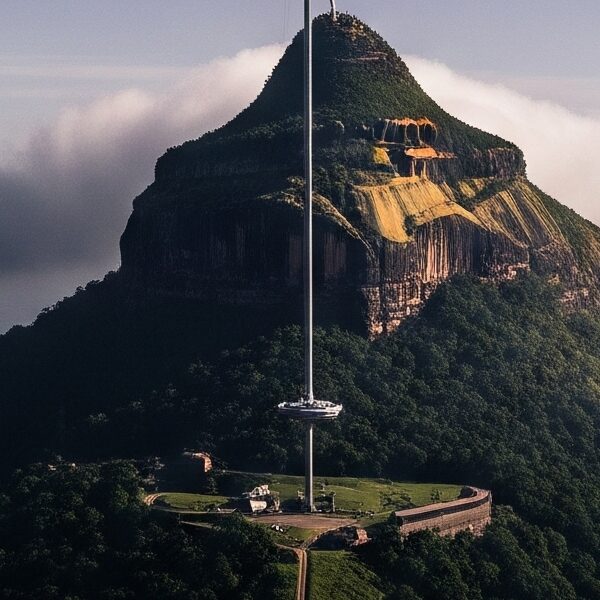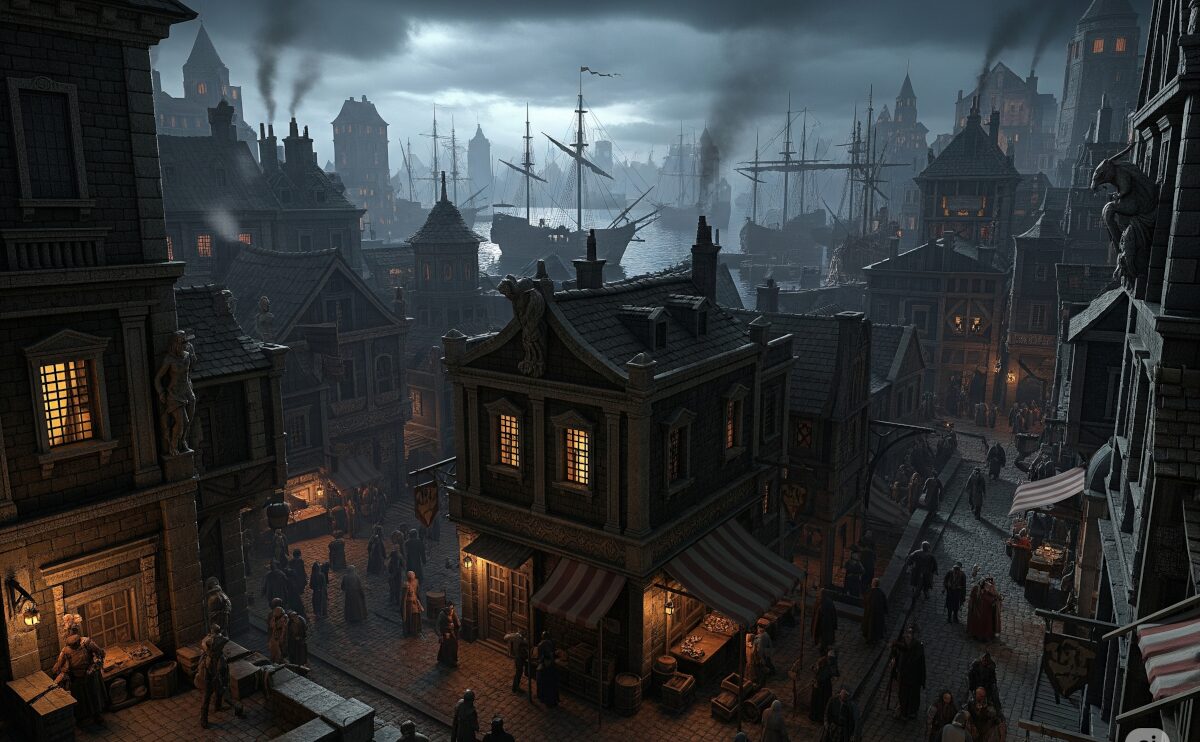Clarke’s Space Elevator
Ascend to Paradise with Clarke’s Vision
Introduction: A Vision Reaching for the Stars
- Introduction: A Vision Reaching for the Stars
- The Allure of Paradise: Clarke’s Towering Dream
- Clarke’s Vision: Ambition, Spirituality, and the Space Elevator’s Human Meaning
- SF Themes Explored: The Clarke’s Space Elevator and Humanity’s Future
- Applying Philosophy to the Everyday: The Mindful Ascent
- Related Entities: The Visionaries Behind the Clarke’s Space Elevator
- Latest Horizons: Elevating Beyond the Page
- In Conclusion: A Gentle Nudge Towards the Stars
Oh, hello there, discerning reader. Today, I, Sophia Aria, find myself rather compelled to speak about a particular gem in the vast cosmos of science fiction – one that truly captures the imagination and stretches the very fabric of possibility. We’re delving into a world where humanity’s reach extends far beyond our terrestrial confines, all thanks to a remarkable vision presented in The Fountains of Paradise by the incomparable Arthur C. Clarke. It’s a novel that, even decades after its 1979 publication, continues to resonate with its audacious concept and profound implications. It effortlessly introduces the grand idea of a Clarke’s Space Elevator, a towering structure that could fundamentally alter our relationship with space itself. Indeed, the sheer audacity of it all is simply delightful, is it not?
The Allure of Paradise: Clarke’s Towering Dream
Now, what truly makes The Fountains of Paradise such a compelling read, aside from its Hugo and Nebula awards, of course, is its central conceit: the Clarke’s Space Elevator. Imagine, if you will, a pathway to the stars, not through the fiery roar of rockets, but by a serene, almost elegant ascent up an impossibly tall tower. Clarke presents this engineering marvel with such convincing detail, one can almost feel the gentle hum of the ascenders. It’s a testament to his genius that a concept once considered purely fantastical now borders on the plausible. If I were to consider its utility, the sheer reduction in the cost of space travel would be transformative, making the cosmos accessible to far more than just the privileged few. It’s a truly elegant solution to a rather messy problem, much like a well-organised museum exhibit, everything in its rightful place.

Clarke’s Vision: Ambition, Spirituality, and the Space Elevator’s Human Meaning
Beyond the magnificent engineering, The Fountains of Paradise offers a fascinating exploration of human ambition and, dare I say, spiritual yearning. The protagonist, Vannevar Morgan, is driven by an almost singular, obsessive desire to build this elevator. His journey is not just one of technological triumph but also a confrontation with ancient beliefs and the very essence of human endeavour. The novel deftly weaves in themes of overcoming obstacles, both physical and ideological, and the quiet determination required to achieve something truly monumental. It asks us to consider what drives us, what we are willing to sacrifice for progress, and whether such grand projects bring us closer to the divine or simply expose our hubris. A rather poignant question, especially when faced with humanity’s persistent struggles, wouldn’t you agree? This deep dive into human motivation is a hallmark of truly insightful Clarke’s Space Elevator narratives.

SF Themes Explored: The Clarke’s Space Elevator and Humanity’s Future
When we consider the broader landscape of science fiction, the idea of a Clarke’s Space Elevator in The Fountains of Paradise offers a fascinating contrast to other common SF themes. Unlike narratives focused on faster-than-light travel or immediate interstellar colonisation, Clarke’s vision grounds humanity’s expansion in a tangible, almost domestic manner. Compare it to, say, the rapid, almost casual jumps across galaxies in Star Trek, or the desperate, long-haul journeys of generation ships. Another interesting comparison could be made with Kim Stanley Robinson’s Red Mars, which meticulously details the terraforming of Mars and the subsequent orbital infrastructure, similarly grounding grand visions in scientific plausibility. Clarke’s approach suggests a more deliberate, perhaps more responsible, first step into the cosmos. It implies a future where we bring our earthly comforts and complexities with us, rather than leaving them entirely behind. This focus on a single, monumental structure also highlights the inherent tension between our desire for progress and the conservation of our home planet.
Applying Philosophy to the Everyday: The Mindful Ascent
One might wonder how a grand tale of a Clarke’s Space Elevator connects to our daily lives. Well, allow me to muse for a moment. The meticulous planning and relentless dedication required to construct such a colossal structure, as depicted in the novel, can be seen as a powerful metaphor for achieving any significant goal. It speaks to the importance of breaking down seemingly insurmountable tasks into manageable steps, of sustained effort, and of maintaining focus despite myriad distractions. Just as the ascenders move steadily upwards, so too can we apply a mindful, step-by-step approach to our own aspirations. It encourages us to be present in the process, to appreciate each small victory on the long climb, rather than just fixating on the distant destination. A touch of philosophical pragmatism, if you will.

Related Entities: The Visionaries Behind the Clarke’s Space Elevator
While Arthur C. Clarke is undeniably the star here, the concept of a Clarke’s Space Elevator itself has garnered attention from various scientific and engineering communities. Organisations like the International Space Elevator Consortium (ISEC) actively explore the feasibility and challenges of such a project. You might find a fascinating overview of current research on space elevators from sources like NASA’s Space Elevator Concepts
or in scientific publications such as this overview of space elevator research. They represent the collective human drive to turn ambitious dreams into tangible realities. It’s rather comforting to know that even the most fantastical notions can inspire serious academic and engineering pursuits, proving that sometimes, even the most outrageous ideas need their practical champions.
Latest Horizons: Elevating Beyond the Page
The concept of the Clarke’s Space Elevator, vividly brought to life in The Fountains of Paradise by Arthur C. Clarke, continues to evolve in scientific discussion and theoretical models. Advancements in material science, particularly with materials like carbon nanotubes, have brought the idea closer to reality, albeit still with significant engineering hurdles. Furthermore, the burgeoning interest in lunar space elevators and other orbital infrastructure demonstrates a continued human desire to innovate and explore our cosmic neighbourhood. It seems Clarke’s visionary spark ignited a very real, very persistent flame in the hearts of engineers and dreamers alike.
In Conclusion: A Gentle Nudge Towards the Stars
And so, we arrive at the culmination of our little journey through The Fountains of Paradise. This novel, for me, is more than just a captivating story of technological marvel; it’s a quiet contemplation on humanity’s enduring spirit, our relentless pursuit of the unknown, and the almost poetic beauty of overcoming monumental challenges. It’s a gentle reminder that sometimes, the most profound insights come from daring to look upwards, not just to the heavens, but to the very best within ourselves. These are, of course, merely my own humble observations, coloured by a rather profound affection for stories that make one dream beyond the immediate horizon.
Clarke’s Space Elevator
Related Articles
-
SF Novel Masterpiece Collection: Discovering the Shadows of Ill Met in Lankhmar by Fritz Leiber

Fritz Leiber Lankhmar is a masterpiece of fantasy. Explore the mysterious world of Lankhmar and the Hugo Award-winning novella by Fritz Leiber.
-
Masterpiece Collection: The Blazing Manifesto for Selfhood – Also sprach Zarathustra by Friedrich Nietzsche

No Will, No Life: Sophia Aria delves into Nietzsche’s electrifying Also sprach Zarathustra, challenging readers to embrace the Will to Power and forge their own values. A compelling call for self-overcoming.
-
No LIFE, No CAT. mindfulness: Finding Peace in the Paradox: Mindfulness Woven by AI’s “Efficiency” and Human “Imperfection” 5th

AI & Human Mindfulness: Explore how AI’s efficiency and human imperfection can guide you towards a mindful, richer life. Learn practical tips for digital wellbeing and slow living.






Leave a Reply